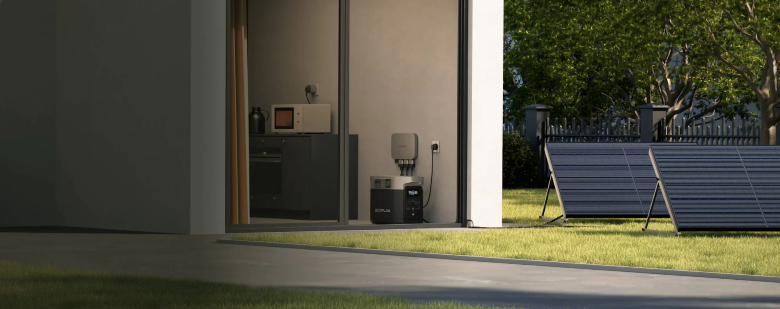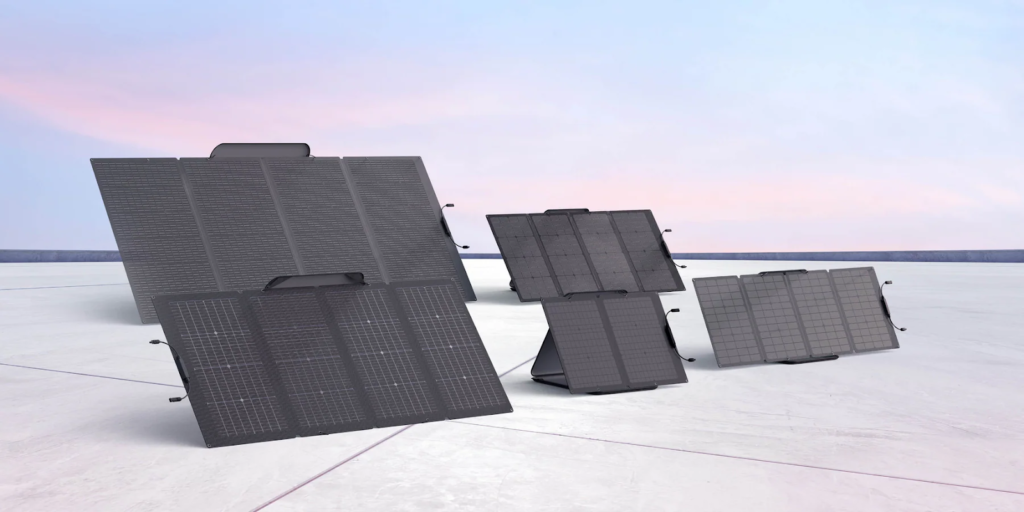Do Solar Panels Work in Cloudy or Rainy Weather?

A common question among homeowners and outdoor enthusiasts is whether solar panels can still produce electricity on cloudy or rainy days. After all, sunlight seems like the one thing solar energy absolutely depends on. In countries like Canada—where weather patterns shift from clear skies to overcast and rain in a single afternoon—this is more than a curiosity; it’s a practical concern.
The short answer? Yes, solar panels still work in cloudy or rainy weather, though efficiency decreases slightly. But thanks to modern photovoltaic technology, intelligent inverters, and advanced battery systems, the gap between sunny and cloudy performance is smaller than ever. Let’s explore how it all works and how you can maximize your solar output no matter the forecast.
1. How Solar Panels Generate Electricity
A solar panel is made up of photovoltaic (PV) cells that convert sunlight into direct current (DC) electricity. These cells respond not just to direct sunlight but also to diffused light—the scattered sunlight that filters through clouds.
Even on an overcast day, solar radiation still reaches the Earth’s surface. While direct sunlight might drop, diffuse light often remains strong enough to power your system efficiently. The key lies in the semiconductor materials, typically silicon, which can absorb a broad range of wavelengths—including those present on cloudy days.
This is why solar panels in countries with frequent cloud cover, such as Germany or the UK, continue to generate impressive annual energy totals despite relatively few full-sun days.
See also: Home Pest Control Services Vancouver: Effective Solutions for a Pest-Free Home
2. How Much Power Do Solar Panels Produce in Cloudy Conditions?
On a cloudy day, solar panel output usually ranges between 10% and 60% of peak capacity, depending on cloud thickness, time of day, and system design.
- Light Overcast (bright haze): Panels may retain 70–80% efficiency.
- Moderate Clouds: Efficiency drops to 40–60%.
- Heavy Clouds or Rain: Production can fall to 10–30%, but rarely to zero.
Interestingly, certain cloud patterns can momentarily boost power. When sunbeams break through gaps in clouds, solar irradiance can spike above typical full-sun levels, producing short bursts of higher output. This “cloud-edge effect” often surprises those monitoring real-time system data.
3. Rainy Weather and Solar Efficiency
Rain might seem like a solar power enemy, but it’s not all bad. While solar panels do generate less electricity during rain, precipitation brings two underrated benefits:
a. Natural Cleaning
Rain naturally washes away dust, pollen, and debris from your panels’ surfaces, which can increase long-term efficiency. In dusty or pollen-heavy environments, this self-cleaning effect can offset some of the temporary loss caused by reduced sunlight.
b. Cooler Temperatures
PV cells perform more efficiently in cooler weather. Excessive heat can lower voltage output. Therefore, a rainy, mild day can sometimes produce nearly as much energy as a hot, cloudless one, especially if sunlight filters intermittently through the clouds.
For Canadian homeowners, where summers can be hot and winters bright but cold, this balance between temperature and light intensity often leads to surprisingly stable yearly solar performance.
4. The Role of Modern Solar Technology
Advancements in photovoltaic technology have made today’s solar panels far more resilient under varying weather conditions. Here’s how:
a. High-Efficiency Monocrystalline Cells
Modern monocrystalline cells can convert even weak or diffused sunlight into usable energy. Their efficiency (around 22–25%) ensures solid performance in low-light conditions.
b. Anti-Reflective and Textured Surfaces
Many panels now feature nano-coatings or surface textures that capture light from multiple angles, improving collection under overcast skies.
c. MPPT Controllers (Maximum Power Point Tracking)
MPPT technology adjusts the system’s voltage to find the optimal point for maximum power conversion, even when sunlight fluctuates rapidly between cloud and sun.
d. Bifacial Solar Panels
These dual-sided panels can absorb light from both the front and rear surfaces—so even light reflected from snow, water, or ground surfaces contributes to electricity generation.
Combined, these technologies allow solar panels to deliver steady power output in unpredictable weather—ideal for regions with diverse climates like British Columbia or Ontario.
5. Seasonal Variations: Cloudy Winters vs. Sunny Summers
In Canada, solar generation follows seasonal patterns rather than daily ones. While summer offers long days and strong sunlight, winter presents shorter daylight hours and frequent cloud cover. However, there’s an upside:
- Colder Air, Higher Efficiency: Solar cells operate better in cool weather, often offsetting shorter days.
- Snow Reflectivity: Fresh snow can reflect sunlight onto panel surfaces, enhancing bifacial panel performance.
- Better Angle of Light: In southern provinces, the lower winter sun angle can actually hit tilted panels more directly for part of the day.
Thus, even with cloudy winters, solar panels continue to generate significant power throughout the year—especially when combined with efficient battery storage or grid-tied systems.

6. How to Maximize Solar Output on Cloudy or Rainy Days
You can improve performance even when the weather isn’t cooperating. Here are key strategies:
a. Optimize Panel Placement
Tilt your solar panels according to latitude (roughly 30–45° for most of Canada) and ensure they face true south for maximum exposure. Adjustable mounting brackets can help adapt to seasonal sun angles.
b. Keep Panels Clean and Clear
Even thin layers of dust, pollen, or snow can block light. Let the rain rinse naturally, but check after storms for debris or ice buildup.
c. Use High-Quality Inverters
A good inverter can make a major difference in variable light. Look for models with MPPT or AI optimization that adapt to rapid changes in solar input.
d. Add Battery Storage
Pairing solar panels with a lithium iron phosphate (LiFePO₄) battery allows you to store excess energy during sunny hours and use it when the sky turns gray. This ensures consistent power even during multi-day storms.
e. Monitor Performance
Modern systems often include apps that show live data—production, consumption, and efficiency. Use this information to understand how different weather conditions affect your setup and adjust your habits accordingly.
7. Cloudy Day Use Cases: Real-World Applications
Residential Homes
Even under overcast skies, solar panels can still provide partial household power or charge battery systems for nighttime use. With grid-tied setups, the system continues to reduce monthly utility costs.
RVs and Campers
Portable panels, especially high-efficiency foldable types, can charge RV batteries or run small appliances even in low light. Diffused sunlight is enough for maintaining devices or refrigeration during road trips.
Off-Grid Cabins
In remote areas where every watt counts, users often oversize their solar panel arrays slightly to compensate for cloudy days—ensuring steady power for lighting, communication, and safety.
Urban Balconies or Small Installations
Even small balcony setups or backyard solar arrays perform reliably across variable conditions when designed for efficiency and battery buffering.
8. Debunking Myths About Solar Performance in Bad Weather
There are several misconceptions that discourage people from considering solar energy in cloudy climates:
- Myth 1: Solar panels don’t work at all without direct sunlight.
False. They work with both direct and indirect light, producing energy as long as daylight exists. - Myth 2: Rain ruins solar panels.
False. Most panels are IP68-rated—fully waterproof and built to withstand snow, rain, and wind. Rain often improves long-term efficiency by cleaning the surface. - Myth 3: Solar energy only makes sense in hot, sunny regions.
False. Some of the most solar-productive countries are in temperate climates. Cold air actually enhances efficiency by keeping panels cooler.
Understanding these facts helps homeowners and travelers make informed decisions rather than relying on outdated assumptions.
9. The Long-Term Perspective: Annual Energy Balance
The real success of a solar panel system isn’t measured by daily fluctuations but by year-round yield. A few cloudy days hardly matter in the long run because:
- Systems are designed for cumulative solar exposure across seasons.
- Net-metering and battery storage balance production and consumption.
- Modern panels retain 80–90% efficiency after decades of operation.
So while day-to-day power may vary, annual energy production remains consistent and dependable—even in Canada’s variable climate.
Conclusion
Clouds and rain are part of life in Canada, but they’re no obstacle to clean energy. Today’s solar panels are engineered to capture every available photon—from bright sunshine to diffused light filtering through clouds. With smart technology, proper installation, and occasional rain to keep them clean, they continue to generate reliable power in all seasons.
So, whether you’re living off-grid in the Rockies or running a city home in Toronto, your solar panels won’t stop working when the weather turns gray—they’ll keep quietly doing their job, rain or shine.





